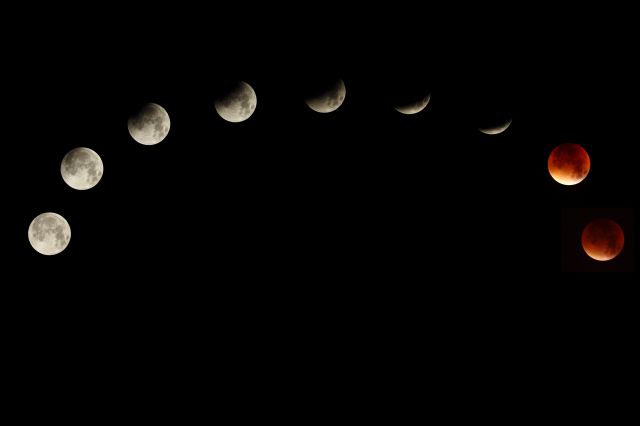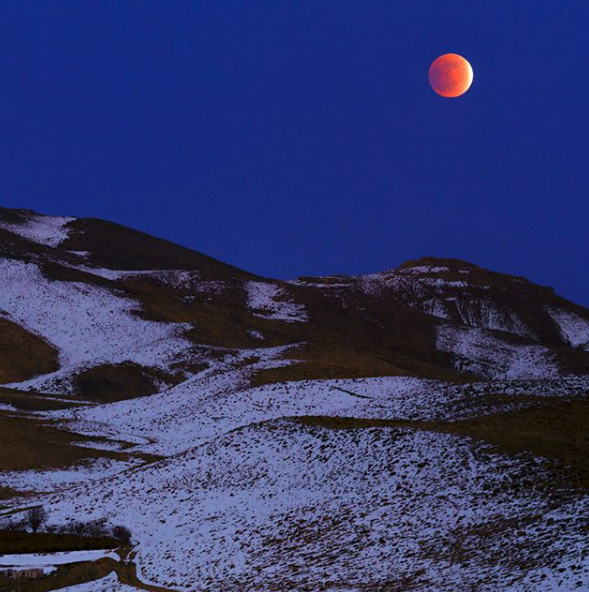
(Ruaraidh Gillies/Wikimedia Commons)
Super Moon? Blue Moon? Blood Moon? Wolf Moon? Whatever is coming our way on Wednesday morning (1/31) is going to worth setting the alarm early here in California. A supermoon happens when a full moon takes place on the moon’s closest orbital point to earth. This event is called a blue moon if it happens more than one time a month (there was a blue moon on January 2, 2018). So, both those events are happening this week, but what’s super blue unusual is that it will take place simultaneously with a full lunar eclipse. And.. the red part is just a bonus, a reflection of light that occurs when the Earth’s shadow blocks the moon.
Something to howl about, for sure. You have a 77 minute window to see something you won’t see again in your lifetime. If the weather is not cloudy, we should be able to see the totality of the event. The partial eclipse will technically begin at 3:48 a.m. on the West Coast, but you can sleep a little longer and tune in for the total eclipse beginning at 4:51 a.m. and ending at 5:29 a.m. No eyewear necessary this time!

Babak Tafreshi
We follow a National Geographic Photographer, Babak Tafreshi, who specializes in night photography and has some beautiful images of similar events. You can join his next live webinar “2018 Night Sky Photographer’s Guide” on Jan 29 at 2pm ET (7pm UT), will be also available on-demand later. Link at babaktafreshi.com/workshop. These webinars are organized by Sky&Telescope, the world’s most respected astronomy magazine.
“Californians and viewers in western Canada will be treated to the total eclipse phase from start to finish, though the penumbral shadow will pass after the Moon has set. The umbral eclipse begins at 3:48 a.m. Pacific Time. At 4:51 a.m., totality will begin, with best viewing between about 5:00 and 6:00 a.m. local time. The totality phase ends about 6:05 a.m. ”
If the weather disappoints, you can watch the event here on YouTube.

